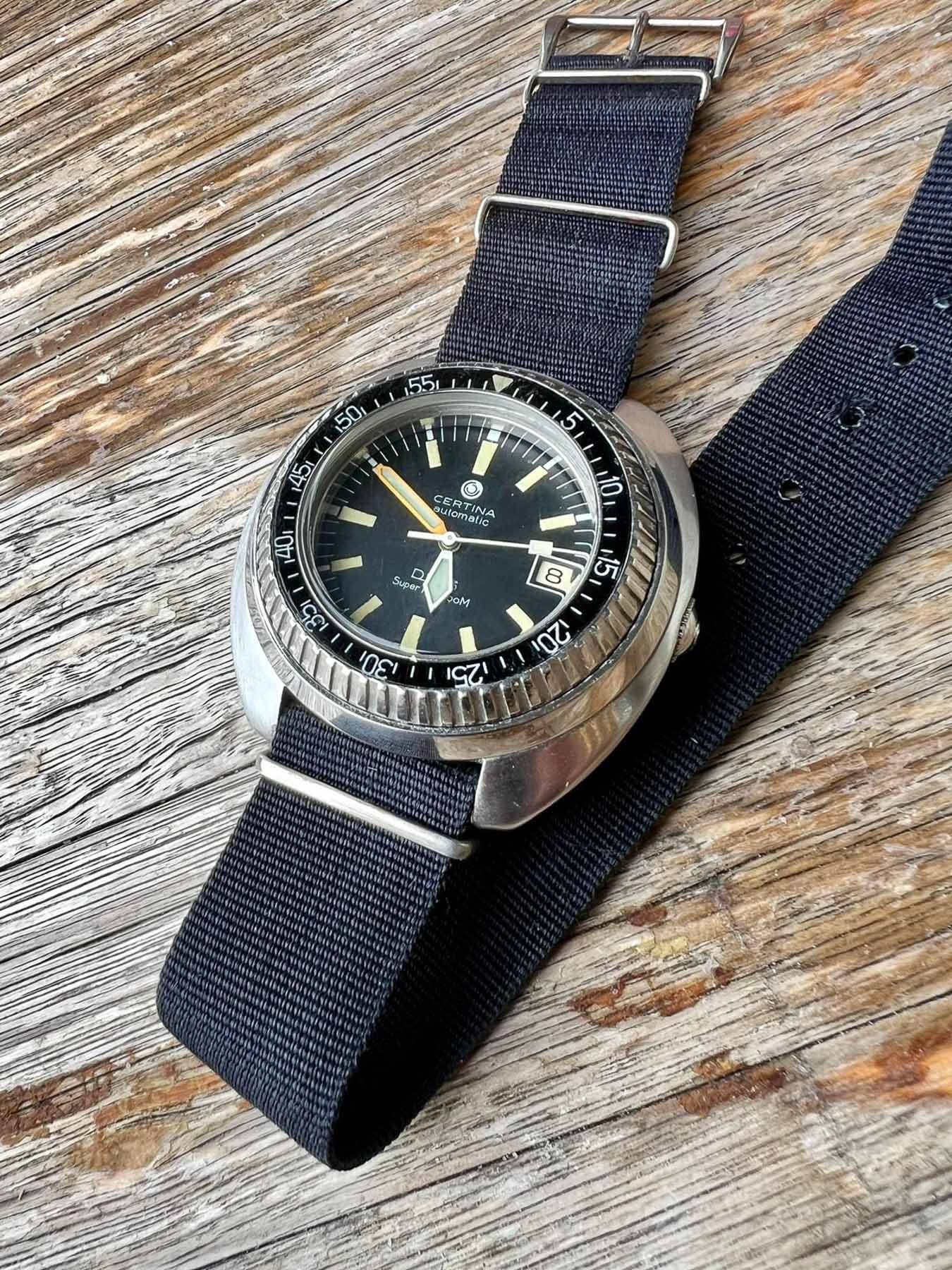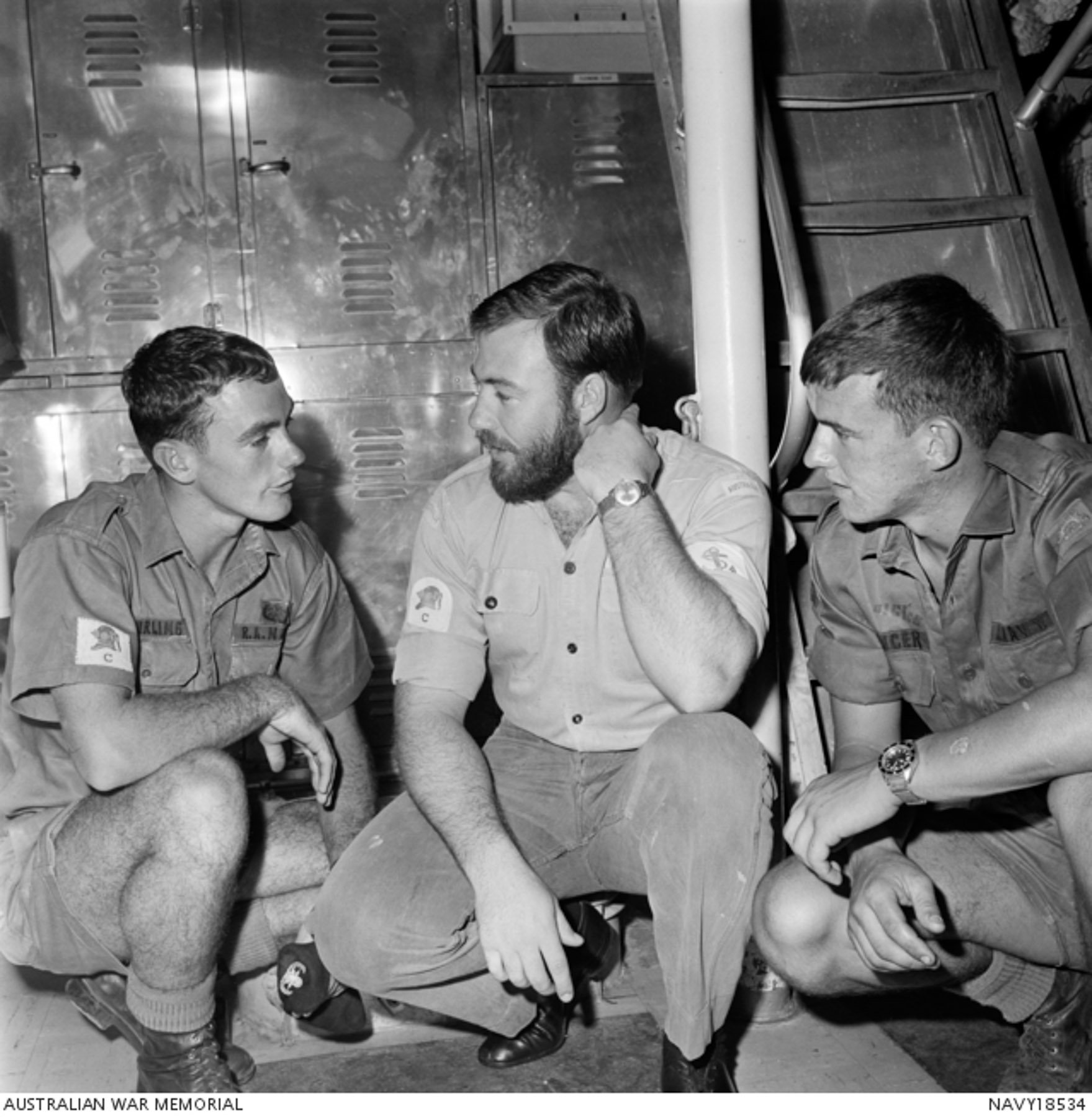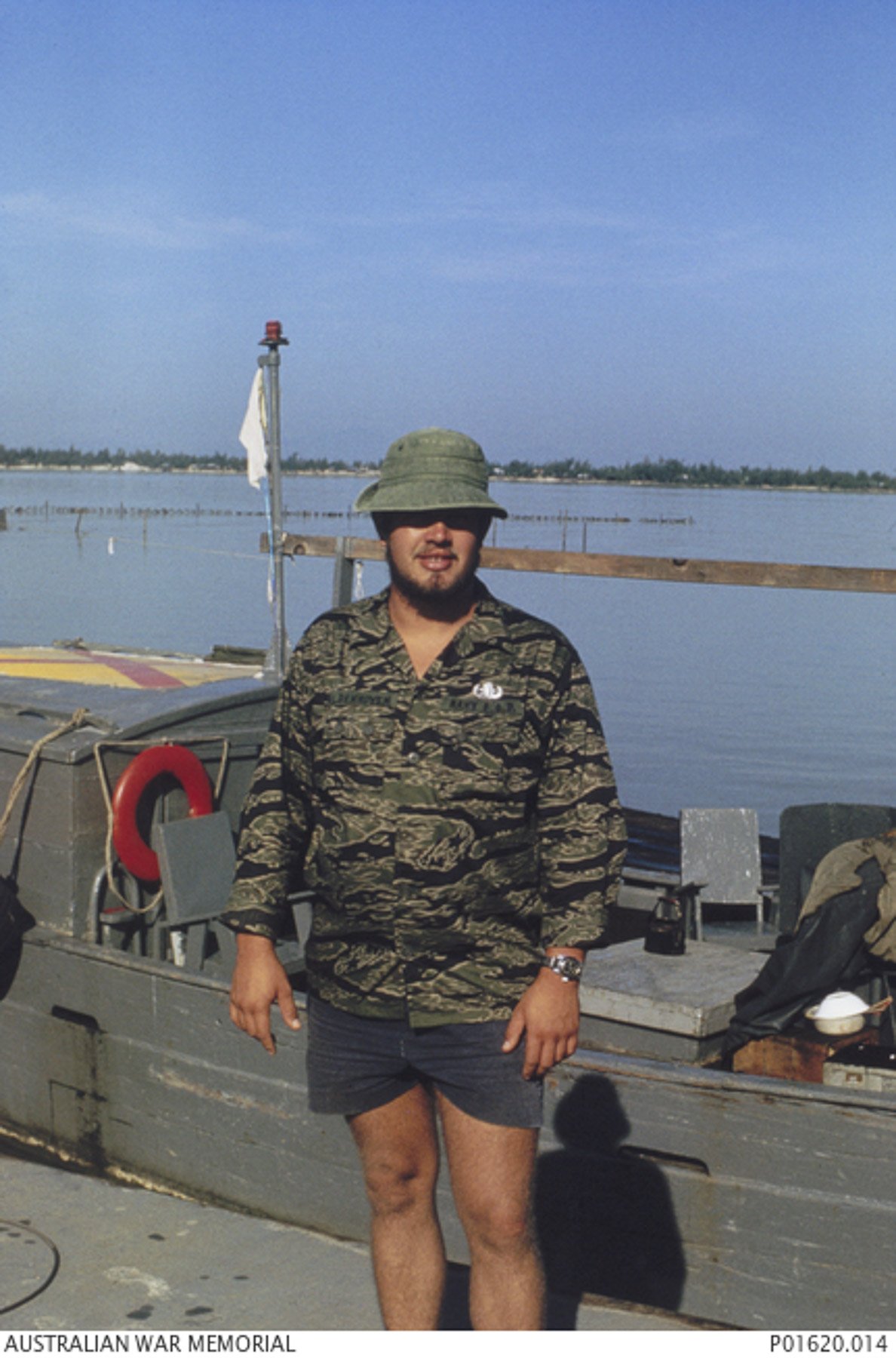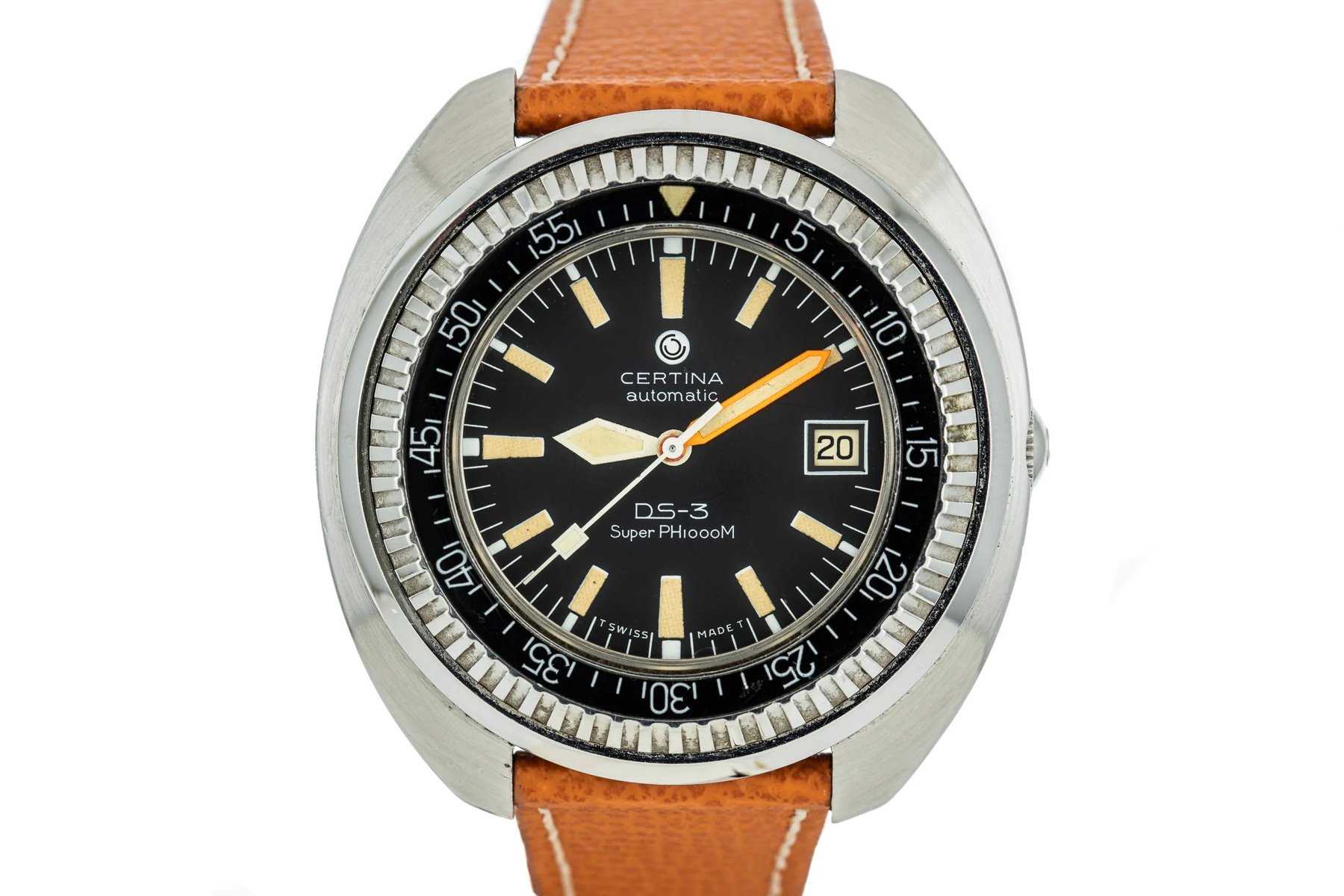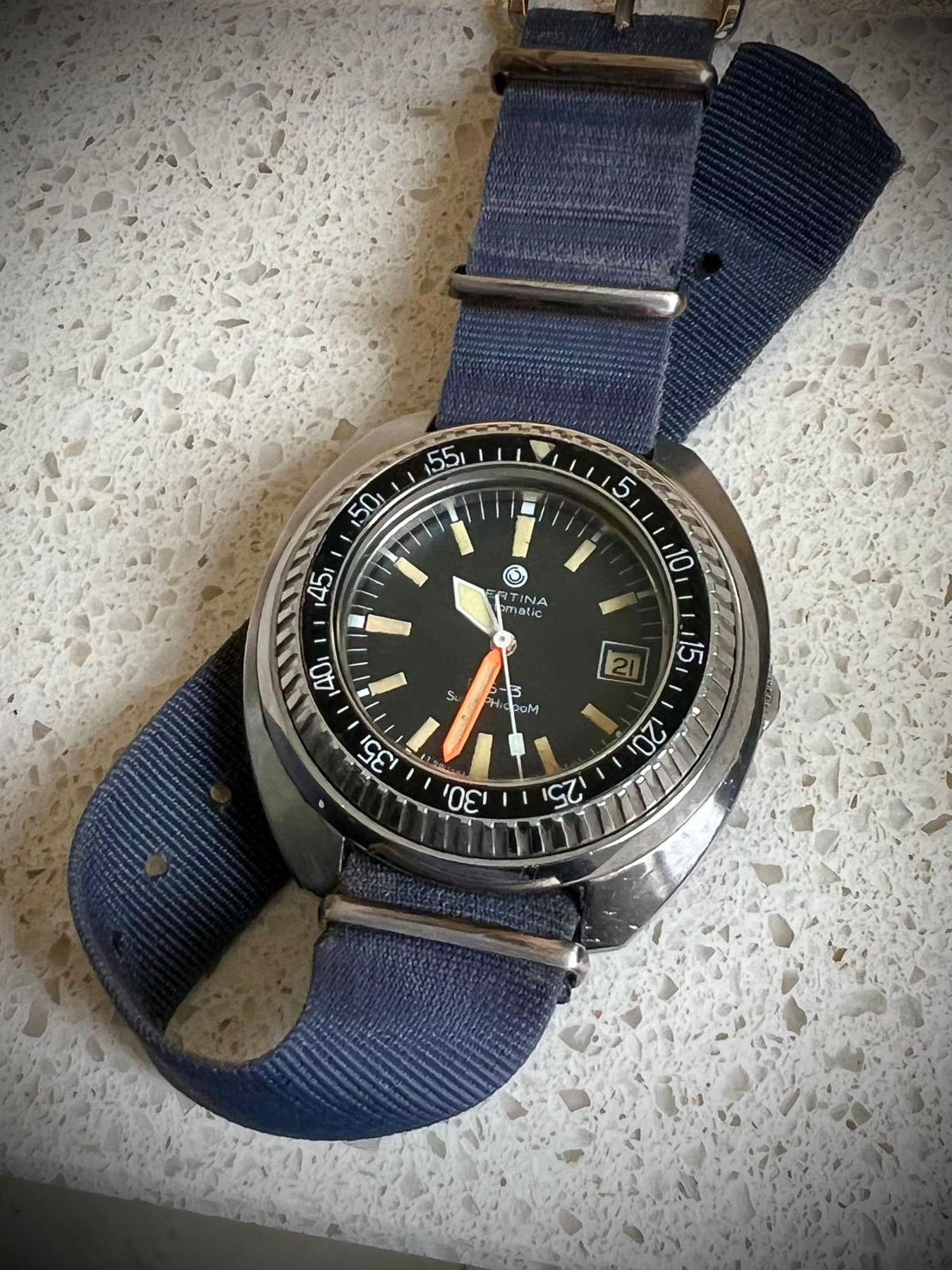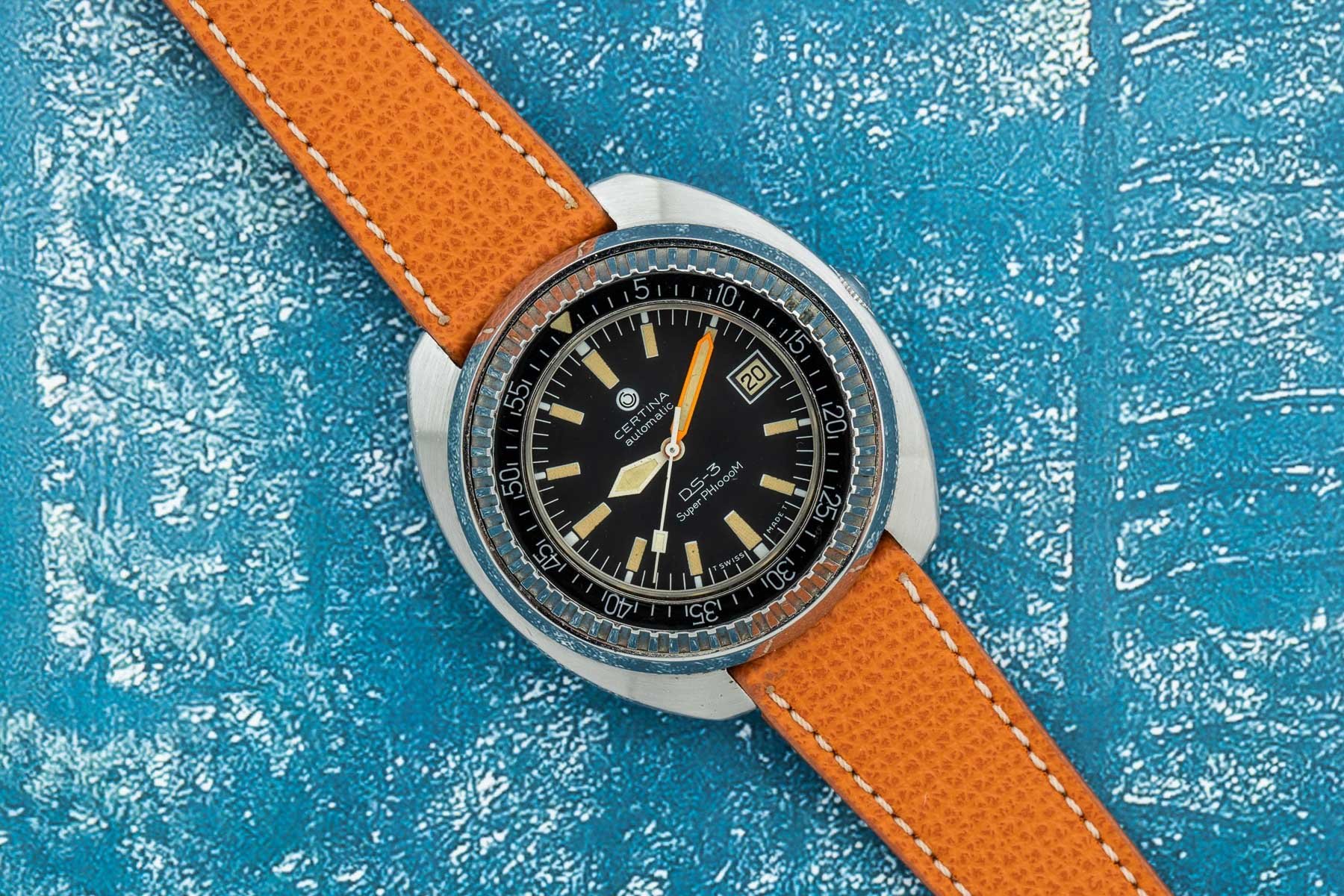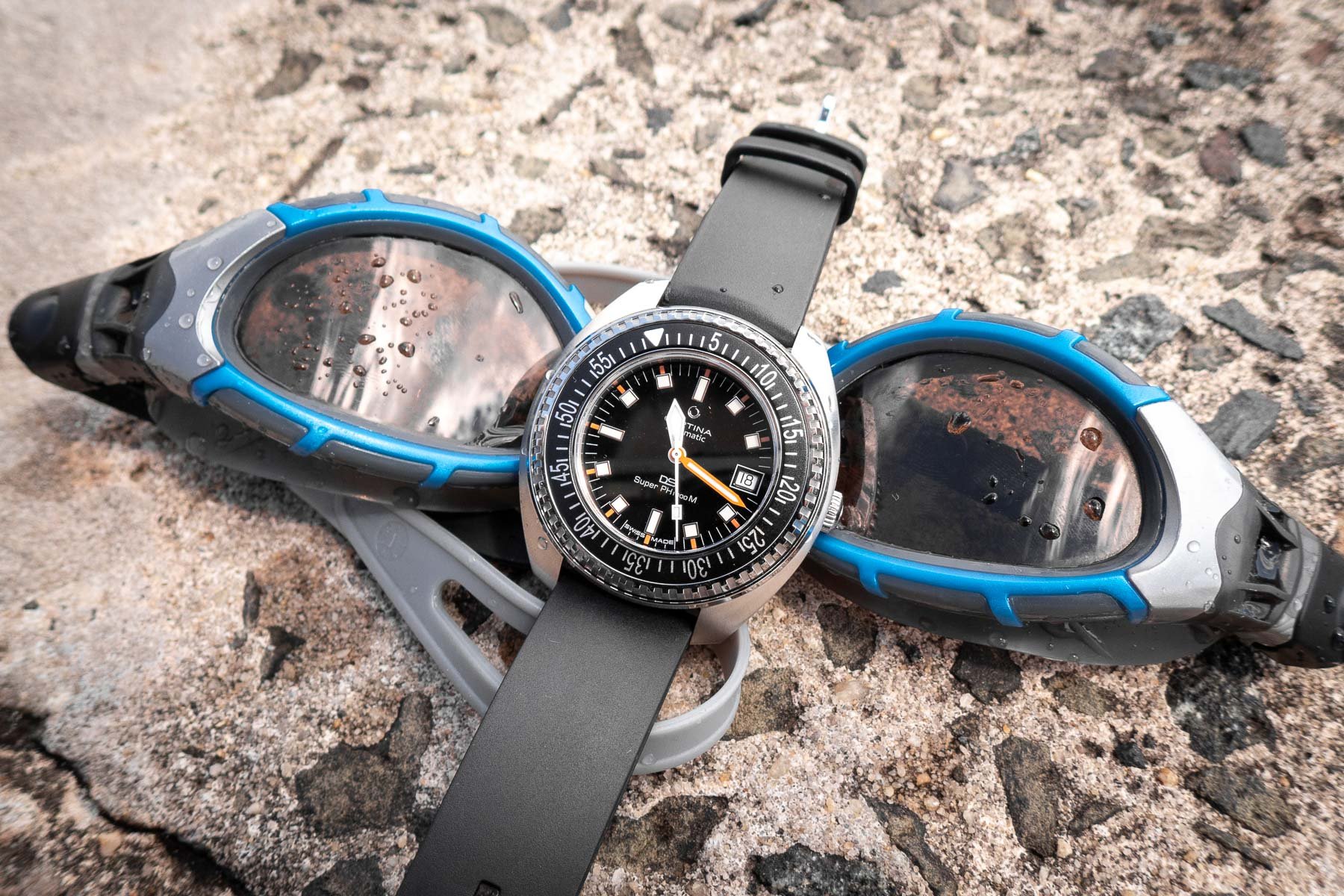Vandaag de Mido Belluna Royal ‘fiffer’ uit Flipper it Forward: MIDO Belluna Royal
Ik voel al dat deze de komende twee weken heel wat rond mijn pols zal vertoeven.
Bedankt @GMTplus1 om deze ter beschikking te stellen!
My pleasure!
Whow wat een toffe Seamaster ![]()
En mocht je je vervelen … ![]()
The Certina Watch Issued To The Elite Royal Australian Navy Clearance Divers
A story about an under-the-radar Certina model that served in Vietnam and its modern counterpart
COMMENTS 26
SHARE
Recently, Certina provided me the opportunity to get my hands on a revived classic, the DS Super PH1000M. I love Certina, and I believe it’s a brand that does not get the kudos it deserves. This article is about the watch from which this new release took its design cues, and it has an incredible backstory.
Last month, I brought you the story of Cabot Watch Company’s (CWC) role in providing watches for journalists working on the front lines. Today’s story is in a similar vein but looks at a Certina watch issued to Australia’s elite Royal Australian Navy clearance diving teams during the height of the Vietnam War. This two-decade-long conflict left millions dead, though exact figures are hotly debatedto this day. It pitted the United States at the height of its power alongside its allies, including South Vietnam and Australia, against North Vietnam and its mainly communist allies.
Image: Mark Tan
A time of war
More than 60,000 Australians served during the Vietnam War alongside the American forces. One of the more infamous battles was the Battle of Long Tan, in which a heavily outnumbered Australian force of 108 men fought for survival (with the Royal New Zealand Artillery regiment providing heavy fire support) against a Viet Cong force of at least 10 times the size. The battle became part of Australia’s military folklore and was the subject of the 2019 Hollywood film Danger Close.
A lesser-known story is that of Australia’s elite clearance divers, who undertook the highly risky and dangerous role of removing unexploded ordnance and mines. Clearance divers carried out several thousand ship searches, looking for bombs and other explosive devices. A total of eight officers and sailors of the RAN were killed and nearly 50 injured in the 10 years of service during the Vietnam War.
According to the Australian War Memorial, the threat of improvised, remote-detonated mines was one of the chief dangers that the Royal Australian Navy faced. In 1970, divers from the Viet Cong managed to secretly lay explosives near the American landing ship, the USS Meeker County in Vung Tau Harbor. Australian clearance divers spotted these explosives and were moving them to a safer location for analysis the next day when the munition ended up exploding on its own. Thankfully, no one was injured.
An eye-witness account
The explosion was captured in this account by one of the RAN clearance divers (Anthony L. Ey, a retired Chief Petty Officer Clearance Diver RAN) who says he was driving (a) vehicle and took several wrong turns in trying to locate the Harbour Security wharf: “This series of events fortunately delayed us by several minutes. As we were climbing aboard the waiting security skimmer boat to proceed to the barge, the barge detonated in a massive blast that shook the whole of Da Nang,” he says. He and his RAN dive team had been tasked with inspecting the relocated ordnance and were on their way there.
“While watching the mushroom-shaped cloud forming from the fireball, I remain convinced to this day that I saw a body heading skywards amongst the flying debris. We were later informed that two male VC suspects from the nearby village had disappeared without a trace. Had I known the most direct route to the wharf area, or had a member of the old team accompanied us, CDT3 would most certainly have suffered its first serious casualties in Da Nang. Approximately half of the 154 tonnes of mortars, rockets, and projectiles on board the barge had detonated and the remaining 70 odd tonnes were ‘throw-outs’.” Dangerous work indeed.
Diving under dangerous conditions since WWII
Australian clearance divers had been operating under various titles since WWII. According to Australian government records, the “Clearance Diving Branch” of the Navy was established in 1951. In 1966, during a tour of Southeast Asia, a team of Australian clearance divers spent a week on an unscheduled operational attachment to a United States Navy Explosive Ordnance Disposal team based near Saigon. “Brief and unofficial though their sojourn was, they became the first Australian clearance divers to serve in Vietnam,” Australian government records state.
Eight Australian Navy clearance diving teams ended up serving in Vietnam. Their work was highly complex and dangerous, partly due to the region’s winding coastal geography. Vietnam’s long coast, many rivers, and the large Mekong Delta near Saigon gave the North Vietnamese and the Viet Cong ample opportunities to attack and disrupt shipping with mines and underwater obstacles, often planted by swimming sappers. “The attempts to combat these threats to shipping were collectively labeled ‘Stable Door’ operations and these were the primary task of the Australian clearance divers,” Australian government records state.
Image: Analog:Shift
The Certina DS-3 Super PH1000M steps in
Performing difficult and highly dangerous tasks required a robust mechanical watch. For this work, the RAN issued its diving teams Certina’s DS-3 Super PH1000M sometime around 1970. This was a large dive watch with a 1,000m depth rating, an impressive technical feat for the time. Certina had already proven itself with the diving community, and the DS-2 had been involved in the Tektite program (a story for another day). I’d argue that Certina is underrated, with vintage examples having build quality equalling, if not surpassing, Rolex counterparts.
The Certina DS-3 Super PH1000M, a relatively under-the-radar vintage model, was a massive and over-engineered dive watch for the time. It featured a large 45mm stainless steel cushion case that was 18mm thick (!), housing a Certina automatic movement. That movement was the Certina 25-651M, a 28-jewel non-hacking automatic caliber with a 19,800vph frequency and a 42-hour power reserve.
The watch’s prominent case back and steeply angled bezel assembly were a testament to its ruggedness. This post on ScubaWatch.org reveals how hulking the vintage watch truly was. Each watch had a simple issue and stock number on the case back. The website Vintage Certina lists it as ref. 919 1301 41. Like the modern rendition, the original has a locking, push-in-to-turn bidirectional bezel, a safety feature that would prevent it from accidentally moving while in use underwater. The back of the case has the NSN (National Stock Number) and issue numbers engraved indicating its use by the RAN. Civilian-production DS-3s had a bird’s-eye view of a turtle swimming, which is a nice design feature that Certina carried over to the modern rendition.
A taste of history
In photos found while researching this story, you can see some of the Australian RAN clearance divers with these burly Certina watches strapped to their wrists. Though the exact number of Certinas issued is uncertain, it is telling that for work that could mean life and death, the RAN chose this specific watch. When removing ordnance, it can sometimes be a matter of seconds between a successful operation and a fatal one. You can find one personal account of a clearance diver serving in Vietnam here. The photos show us mere snapshots of time, but seeing these snippets from an era that feels so remote now is incredible.
Image: Mark Tan
Working in the murky depths
For the Viet Cong, ships, often carrying military supplies, were a particularly valuable target, as were military vessels. The alliance between North Vietnam and the Soviet Union created significant challenges for clearance divers as it led to the use of relatively sophisticated Soviet-manufactured limpet mines. Australian clearance divers would also dispose of unexploded ordnance that had become unsafe and work in salvage operations, including, for example, diving around downed aircraft to remove classified material and render any explosive material safe.
Image: Analog:Shift
As Australian government records note, all eight clearance diving contingents performed difficult, dangerous tasks, often in very unpleasant conditions: “The waters in which they generally operated carried swift currents, were murky — reducing visibility considerably — and choppy. The materials with which the divers worked were unstable and, if handled incorrectly, lethal. Their work did not have the same profile as that carried out by Australian naval vessels or aviators, but it was vital to the safety of shipping, both military and civilian, in South Vietnam.”
Prachtige Certina met een mooi verhaal erbij ![]()
Deze al een tijdje niet meer gedragen dus vandaag dan maar. Volgens mij niet vaak te zien hier. Fijne zondag.
Leest niemand ![]()
Juist wel, dat zijn de verhalen erbij die ik tof vindt.
Altijd leuk om de geschiedenis van een model te lezen ![]() en er zullen er vast meer zoals ik zijn .
en er zullen er vast meer zoals ik zijn .
Je weet dat ik niet zo goed ben in verhaaltjes dus dacht laat ik ééns uitpakken.
Schiet lekker op he die afspraak van ons ![]()
![]()













